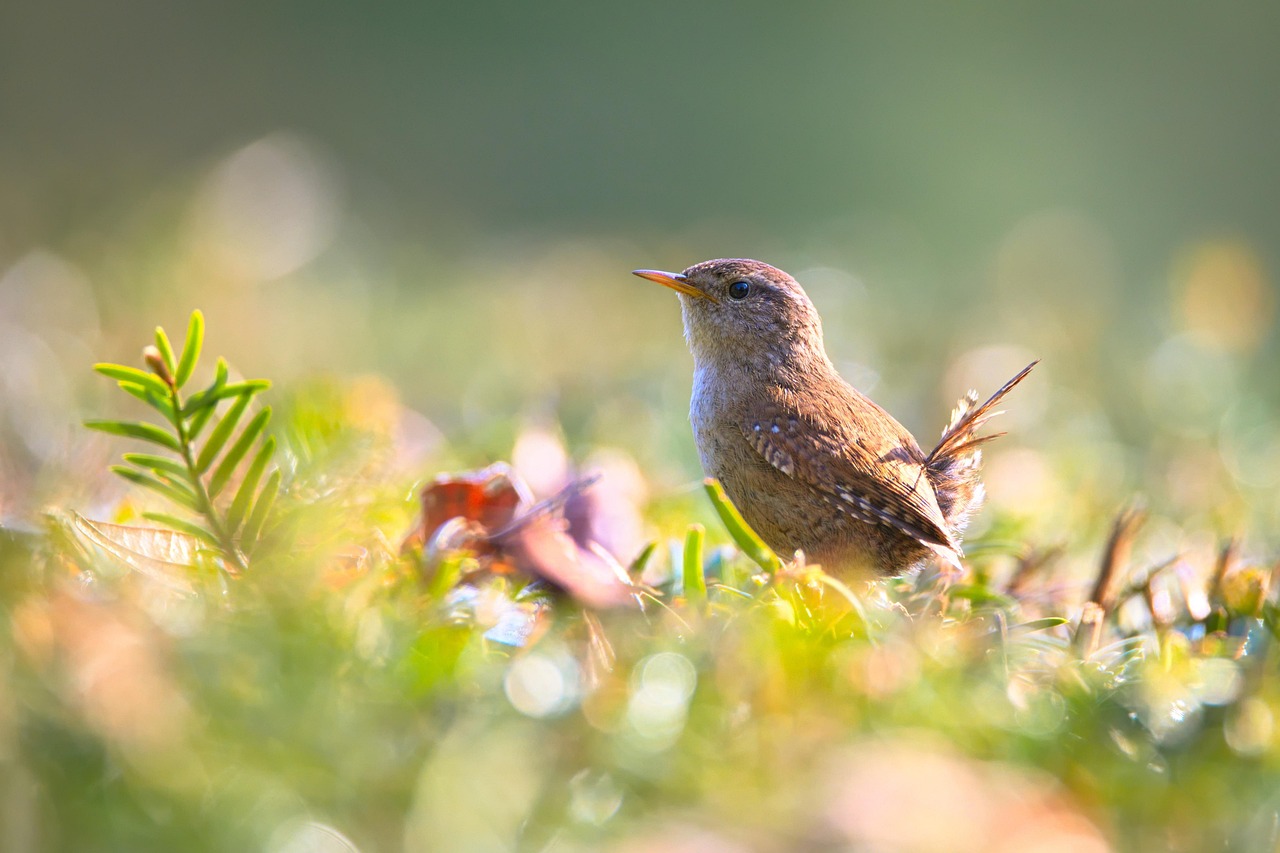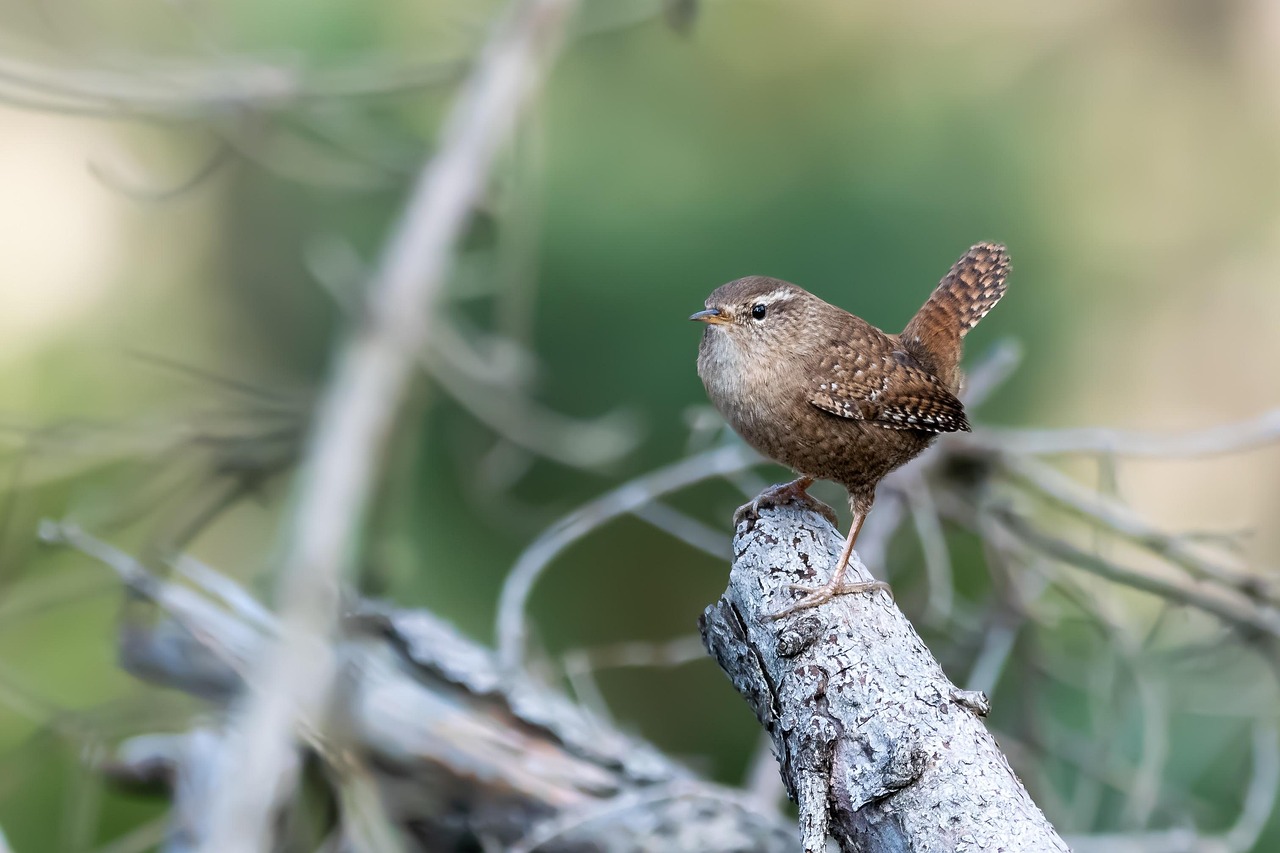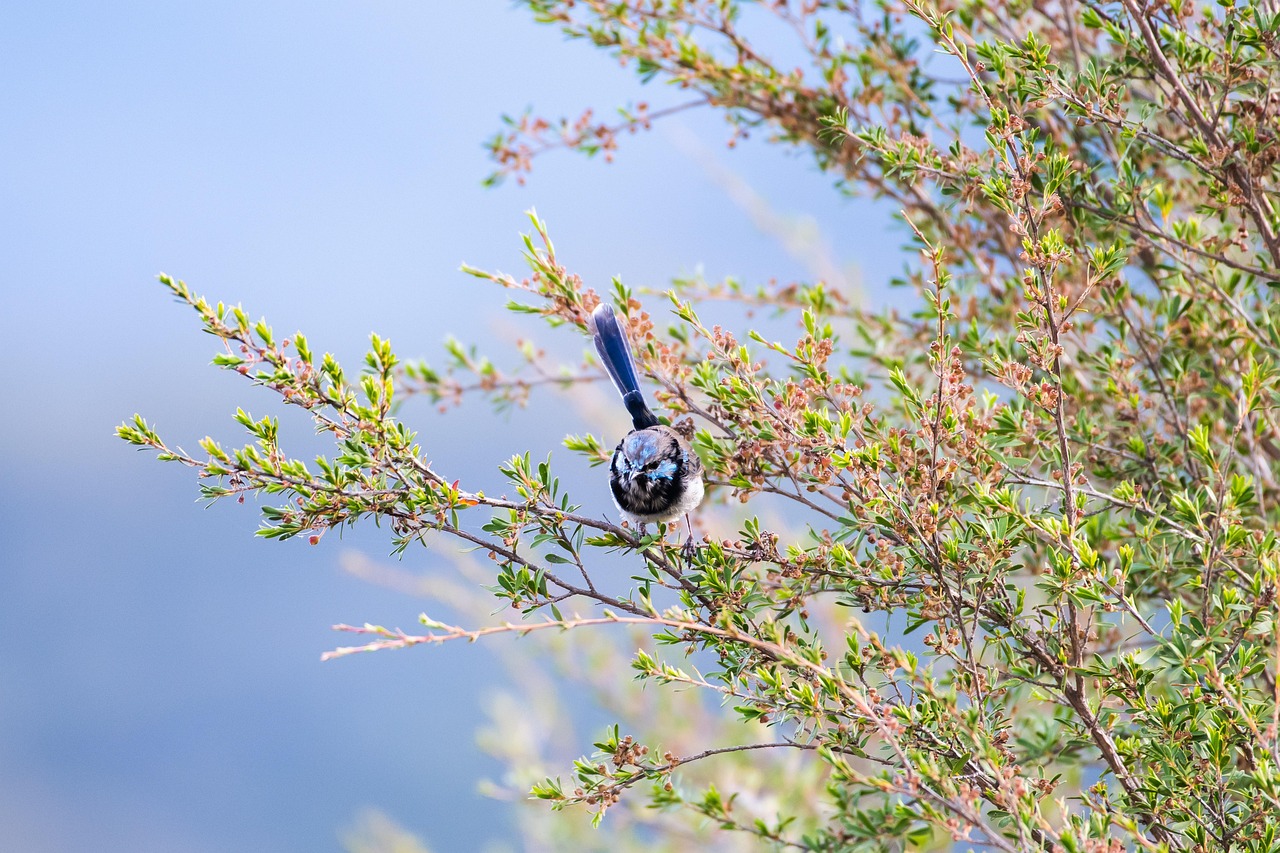Wrens and sparrows differ significantly in size and song. Wrens are generally smaller, with most species measuring between 3 to 5 inches in length. In contrast, sparrows are larger, typically ranging from 4 to 7 inches. Additionally, wrens produce a series of complex and melodious songs, whereas sparrows have simpler, more rhythmic tunes.
Understanding Wrens and Sparrows

Wrens and sparrows are both small birds commonly found in various habitats across the world. They belong to different families and exhibit distinct characteristics that make them unique. Wrens are known for their energetic behavior and intricate vocalizations. Sparrows, on the other hand, are often appreciated for their social nature and adaptability.
The two groups serve important roles in their ecosystems. They contribute to pest control by consuming insects and seeds. Additionally, their songs play a crucial role in communication, mating rituals, and territory establishment. Understanding the differences between these bird families can enhance your appreciation for them.
Size Comparison
When comparing the sizes of wrens and sparrows, it is essential to note the variations within each family. While both types of birds are small, wrens tend to be on the smaller end of the scale.
| Bird Type | Average Length (inches) | Weight (grams) |
|---|---|---|
| Wrens | 3 to 5 | 9 to 18 |
| Sparrows | 4 to 7 | 24 to 40 |
The table above illustrates the average lengths and weights of both wrens and sparrows. As shown, wrens are lighter and shorter compared to sparrows. This size difference can impact their behavior and habitat preferences.
Song Differences
The songs of wrens and sparrows are another area where they markedly differ. Wren songs are often described as rich, varied, and complex. They can include a series of trills, chirps, and whistles. This diversity in their vocalizations allows them to convey different messages and emotions.
Sparrows typically have a simpler song structure. Their calls often consist of a series of repetitive notes. Although less complex than wren songs, sparrow calls can still be quite charming. These calls often serve practical purposes such as signaling danger or attracting mates.
Wren Songs
Wrens are known for their remarkable singing ability. Some species, like the House Wren, have been documented singing over 100 different notes. Their songs can vary significantly based on the season and context. Males are particularly vocal during the breeding season as they compete for territory and attract females.
Sparrow Songs
Sparrows have a more straightforward approach to singing. Their songs often consist of a few repeated notes or phrases. These simple tunes help maintain group cohesion within flocks. Even though less elaborate than wren songs, sparrow calls are essential for communication among their peers.
In summary, while both wrens and sparrows share similarities as small birds found in diverse environments, their differences in size and song highlight the unique adaptations each has developed over time. Understanding these distinctions can deepen our appreciation for these fascinating creatures.
Habitat Preferences
Both wrens and sparrows exhibit distinct habitat preferences that influence their distribution and behavior. Understanding these preferences can provide insight into their lifestyles and survival strategies. Each bird type has evolved to thrive in specific environments, which is closely linked to their feeding habits, nesting choices, and social structures.
Wren Habitats
Wrens are generally found in a variety of habitats, but they show a strong preference for areas that offer dense vegetation. This can include:
- Woodlands: Wrens thrive in forests where they can find ample cover among shrubs and trees.
- Gardens: They are often spotted in backyards with dense bushes and flower beds.
- Wetlands: Some species prefer marshy areas where they can forage for insects.
- Grasslands: Certain wrens inhabit tall grasslands, utilizing the grass for nesting materials.
Their choice of habitat is crucial as it provides them with protection from predators and access to food sources. The dense vegetation also plays a role in their vocal behavior. Wrens use their songs to defend territory and attract mates, and a rich habitat enhances their ability to communicate.
Sparrow Habitats
Sparrows are highly adaptable and can thrive in a range of environments. Their preferred habitats include:
- Urban Areas: Many sparrow species are commonly found in cities, taking advantage of human activity.
- Open Fields: They enjoy open spaces where they can forage for seeds and insects.
- Agricultural Land: Sparrows often inhabit farmland, where crops provide abundant food.
- Forested Areas: Some species can be found in the edges of forests, benefiting from both open and wooded spaces.
The adaptability of sparrows allows them to thrive alongside humans and in various landscapes. Their ability to utilize different food sources contributes to their success in diverse environments.
Nesting Behavior
Nesting behavior is another area where wrens and sparrows differ significantly. Their nesting choices reflect their individual preferences for safety, location, and resource availability.
Wren Nesting
Wrens are known for their unique and often elaborate nesting habits. They typically build nests in concealed locations such as:
- Hollow Trees: Some wrens prefer natural cavities for shelter.
- Bushes: Dense shrubs provide excellent cover for their nests.
- Man-made Structures: They may use old birdhouses or even the crevices of buildings.
Wrens are also known for their aggressive nesting behavior. Males will often build multiple nests within their territory, sometimes even competing with other males to attract females. This behavior increases their chances of successful mating. The female typically chooses one of the nests to lay her eggs, which usually number between 4 to 7.
Sparrow Nesting
Sparrows also exhibit interesting nesting behaviors, though they are generally less aggressive than wrens. Their nests are often built in:
- Grass Clumps: Many sparrows create nests on the ground or low to the ground in thick grasses.
- Bushes: Similar to wrens, they utilize dense vegetation for safety.
- Human-made Structures: Sparrows frequently nest in eaves, gutters, or any sheltered area near human habitation.
Sparrows typically lay 3 to 5 eggs, which the female incubates. Their nests are usually simpler than wren nests and focus primarily on functionality rather than elaborate construction.
Feeding Habits

The feeding habits of wrens and sparrows further highlight their differences. Each bird has developed specialized techniques for locating and consuming food based on its environment and lifestyle.
Wren Feeding
Wrens are primarily insectivorous, relying heavily on insects as their main food source. They have a unique foraging style that includes:
- Gleaning: Wrens often search leaves and branches for hidden insects.
- Catching Insects in Flight: They may also catch small flying insects while in motion.
- Foraging on the Ground: They actively search for food among leaves and debris.
Their agile movements help them navigate through thick vegetation, allowing them to find food efficiently. Occasionally, wrens will also consume seeds or fruits, especially during winter months when insects are scarce.
Sparrow Feeding
Sparrows have a more varied diet that includes seeds, grains, and small insects. Their feeding habits encompass:
- Ground Foraging: Sparrows often forage on the ground for seeds dropped by plants or discarded by humans.
- Seed Eating: They primarily consume seeds from grasses and weeds.
- Insect Consumption: During breeding season, they also eat insects for protein.
This omnivorous diet allows sparrows to thrive in various environments, making them highly adaptable to changing conditions.
Behavioral Differences
The behavioral traits of wrens and sparrows reveal fascinating insights into their daily lives and social interactions. These behaviors are influenced by their ecological niches and survival strategies, which vary significantly between the two bird families.
Social Behavior
Social behavior is a prominent aspect of both wrens and sparrows, although they exhibit different patterns. Understanding these social dynamics can enhance our knowledge of their interactions and group structures.
Wren Social Behavior
Wrens are generally more solitary or territorial compared to sparrows. Male wrens often establish and defend their territories vigorously during the breeding season. Some key aspects of wren social behavior include:

- Territoriality: Males sing to mark their territory, often engaging in aggressive displays against intruders.
- Solitary Nesting: While they may be seen in pairs during breeding, wrens prefer nesting alone, particularly to reduce competition for resources.
- Parental Care: Both parents typically participate in raising the young, but they may become more protective as the chicks grow.
Despite their solitary nature, wrens can sometimes be observed in small groups during non-breeding seasons, especially when food is abundant.
Sparrow Social Behavior
Sparrows are known for their gregarious nature and often congregate in larger flocks. Their social behavior includes:
- Flocking: Sparrows often gather in flocks, which helps them find food and provides safety in numbers from predators.
- Cooperative Feeding: Flocks may work together to locate food sources, making foraging more efficient.
- Social Calls: They use various calls to communicate with each other within the flock, reinforcing their social bonds.
This social structure allows sparrows to thrive in diverse environments and enhances their survival rate through collective vigilance.
Mating Rituals
Mating rituals are another area where wrens and sparrows differ significantly. These rituals encompass courtship behaviors, displays, and nesting choices.
Wren Mating Rituals
Wren mating rituals are characterized by elaborate displays and vocalizations. Some important aspects include:
- Singing Competitions: Males often engage in singing contests to showcase their vocal prowess, which attracts females.
- Nest Building: Males often construct multiple nests within their territory, hoping to entice a female to choose one for laying eggs.
- Display Flights: Males may perform aerial displays to impress potential mates, showcasing their agility and fitness.
The female’s choice of mate is largely influenced by the male’s singing ability and the quality of the nests he builds.
Sparrow Mating Rituals
Sparrow mating rituals are typically less elaborate than those of wrens. Key components of their courtship include:
- Singing: Males produce simple songs to attract females and establish territory.
- Courtship Feeding: Males may offer food to females as part of their courtship behavior.
- Nesting Together: Once a pair forms, they work collaboratively to build a nest, often using available materials in their environment.
This cooperative approach to nesting enhances their chances of successfully raising offspring while fostering pair bonds.
Conservation Status
The conservation status of wrens and sparrows varies depending on species and geographical location. Understanding their status can help in the efforts to protect these birds and their habitats.
Wren Conservation Status
Many wren species are considered stable; however, some face threats from habitat loss, climate change, and competition with invasive species. Notably:
- Habitat Loss: Deforestation and urban development can lead to decreased nesting sites and food availability.
- Invasive Species: Non-native birds may compete with wrens for resources, impacting their populations.
- Climate Change: Changes in weather patterns can disrupt breeding cycles and food availability.
Conservation efforts are crucial for the protection of vulnerable wren species, particularly those with limited ranges or specific habitat requirements.
Sparrow Conservation Status
Sparrows, particularly the House Sparrow, are widespread and adaptable; however, some species have experienced population declines due to similar threats. Key points include:
- Pesticide Use: Agricultural practices that rely on pesticides can reduce insect populations, affecting sparrow food sources.
- Urbanization: While some sparrows thrive in urban settings, others suffer due to habitat fragmentation and pollution.
- Climate Impact: Sparrows may also be affected by changing climates, which can alter food availability and nesting conditions.
Monitoring sparrow populations is essential for understanding trends and implementing effective conservation strategies.
Behavioral Adaptations

Understanding the behavioral adaptations of wrens and sparrows can shed light on how they successfully navigate their environments. These adaptations are crucial for their survival and reproductive success, showcasing their remarkable ability to thrive in diverse habitats.
Wren Behavioral Adaptations
Wrens exhibit several behavioral adaptations that enhance their ability to find food and avoid predators. Some notable traits include:
- Vocal Communication: Wrens are skilled singers, using their songs not only for attracting mates but also for establishing territory. Their complex vocalizations help them convey information about their presence to other birds.
- Agility in Foraging: Wrens are incredibly agile, allowing them to navigate through thick brush and foliage. This agility enables them to find insects hidden in foliage or under debris.
- Adaptive Nesting: Wrens often build multiple nests, which allows them to choose the safest or most suitable location for rearing their young. This behavior reduces the risk of predation.
Sparrow Behavioral Adaptations
Sparrows have their own set of behavioral adaptations that contribute to their success in various environments. Key adaptations include:
- Social Structure: Their gregarious nature allows sparrows to benefit from flocking behavior. By staying in groups, they can better detect predators and ensure collective safety.
- Flexible Diet: Sparrows can adapt their feeding habits based on food availability. Their omnivorous diet allows them to switch between seeds, grains, and insects, making them resilient to changes in their environment.
- Rapid Reproduction: Sparrows often produce multiple broods in a single breeding season, increasing their chances of successful offspring despite potential challenges like predation or habitat loss.
Interactions with Humans
The relationship between wrens, sparrows, and humans is multifaceted. While both types of birds can benefit from human presence, they also face challenges due to urbanization and agricultural practices.
Wrens and Humans
Wrens are generally less visible in urban areas compared to sparrows, but they can thrive in suburban gardens with dense vegetation. Some ways in which wrens interact with humans include:
- Garden Visitors: Wrens can be attracted to gardens that provide natural habitats, such as shrubs and flower beds where they can forage for insects.
- Birdwatching: Their vibrant songs and lively behaviors make them popular among birdwatchers and enthusiasts who appreciate their unique characteristics.
- Conservation Support: Awareness of wren populations has led to conservation efforts aimed at preserving their natural habitats.
Sparrows and Humans
Sparrows are often found in close proximity to human habitation. Their adaptability has allowed them to thrive in urban environments. Key interactions include:
- Urban Adaptation: Sparrows have adapted well to city life, frequently seen scavenging for food remnants in public spaces.
- Cultural Significance: Sparrows are often featured in literature and art, symbolizing commonality and resilience.
- Pest Control: In some cases, sparrows can help control insect populations, providing a natural form of pest management.
Final Thoughts
The differences between wrens and sparrows encompass various aspects of their biology, behavior, and interactions with the environment. Understanding these key differences enhances our appreciation for these small birds that play vital roles in ecosystems worldwide.
Wrens, with their melodious songs and agile foraging habits, highlight the beauty of avian diversity. Their solitary behaviors and intricate nesting strategies exemplify the adaptability required for survival in varied habitats. Conversely, sparrows demonstrate remarkable flexibility and social structures that allow them to thrive alongside humans in urban settings. Their varied diets and communal behaviors showcase their resilience.
As conservation challenges persist, awareness of the unique traits and needs of both wrens and sparrows is essential. Protecting their habitats ensures that future generations can continue to enjoy the sights and sounds of these fascinating birds. Whether you encounter a wren’s complex song or a sparrow’s cheerful chirp, each moment spent observing these birds offers a glimpse into the intricate tapestry of nature.
In conclusion, the study of wrens and sparrows not only enriches our understanding of avian life but also emphasizes the importance of conservation efforts that support biodiversity. By fostering healthy ecosystems, we allow both wrens and sparrows to thrive, contributing to the overall health of our environment.
